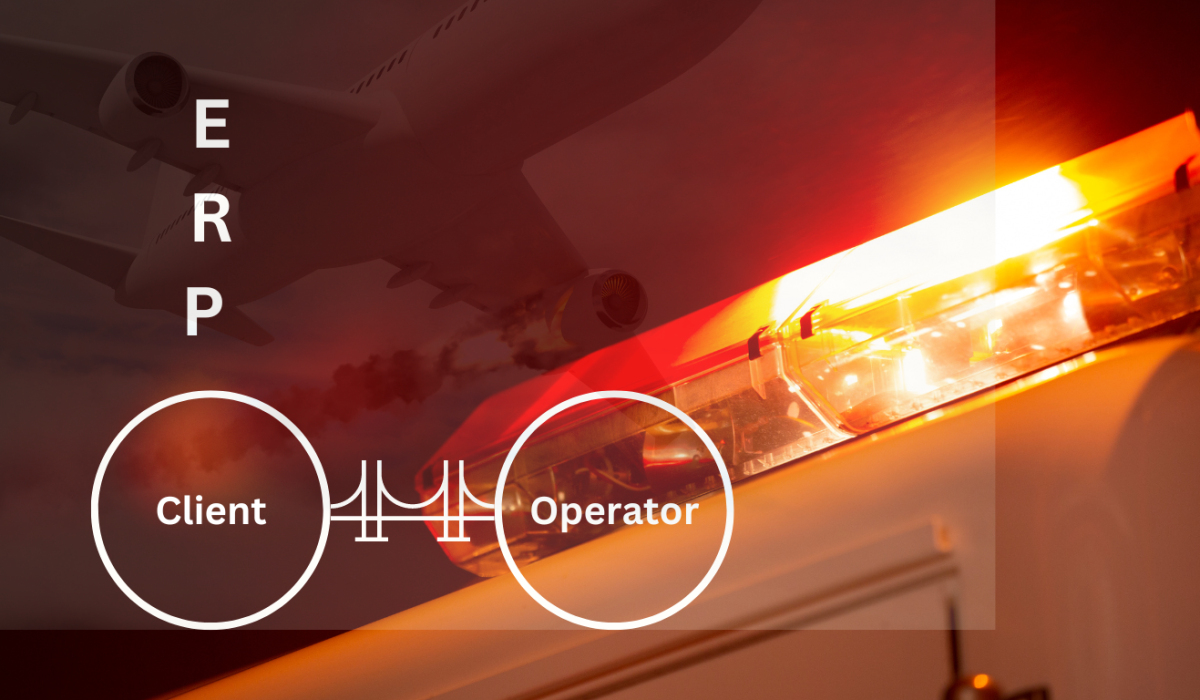Guidelines for preparing an Emergency Response Plan Bridging Document
Our safety specialists discuss
1. Purpose of the Bridging Document
The ERP Bridging Document acts as a link between the Operator’s Emergency Response Plan and the Client’s Emergency Response Plan.
The Client and the Operator have their own Emergency Response Procedures which will both be activated in an emergency.
In the event of an emergency involving one of the Operator’s flights carrying the Client’s passengers, the Bridging Document will ensure:
- The Emergency Response Procedures are compatible
- That the Operator and Client are both aware of the emergency
- The Operator and Client are both aware of their own and the other’s responsibilities in an emergency
- No key activities in the emergency have been overlooked.
The Bridging Document should be a simple, easily understood document, approved by both the Operator and the Client. The document must be readily available to Key Emergency Personnel. Examples of details that could be included in the Bridging document are:
- Who oversees the media briefing?
- Who cares for dependants?
Joint emergency exercises should be held regularly, to test both Emergency Response Plans and the Bridging Document. Following each emergency exercise, a joint debrief should be held and the plans and Bridging Document updated as required. A similar debrief should also follow any actual emergency.
Litson & Associates has compiled an Emergency Response Plan Bridging Document with guidelines to assist both Operators and Clients.
2. Key contact details:
The Operator:
The Client :
3. Key Action Responsibilities
Certain Key Actions will always remain the responsibility of the Operator. Others may be handled by the Client.
3.1 The Operator
The Operator will always be responsible for the following in the event of an emergency occurring on a flight operated on behalf of the Client:
- Notification of the Client
- Maintaining communications with the Client
- Keeping the Client informed as to the status of and progress with handling the emergency. The Client will be allowed to have a representative in the Operator’s Emergency Operations Centre. Similarly, the Operator could have a representative in the Client’s Emergency Operations Centre
- Liaison with airport authorities and other emergency services
- Handling of the crew and their families
- All operational matters involving the aircraft and crew
- Liaison with Civil Aviation Authorities
- Liaison with the Aeronautical Rescue Coordination Centre
- Handling the media concerning aircraft and crew
- Final debrief
3.2 The Client
The Client will always be responsible for the following in the event of an emergency occurring on a flight operated on behalf of the Client:
- Maintaining communications with the Operator
- Keeping the Operator informed as to the status of and progress with handling the emergency. Normally the Client will be allowed to have a representative in the Operator’s Emergency Operations Centre. Similarly, the Operator could have a representative in the Client’s Emergency Operations Centre
- Final debrief
3.3 Either the Operator or Client
Depending on the nature of the agreement between the Client and the Operator, the responsibility for the following actions need to be assigned to either the Operator or Client or shared (with details specified so that it cannot be overlooked by either party):
- Handling of passengers and their families.
- Handling the media concerning passengers.
